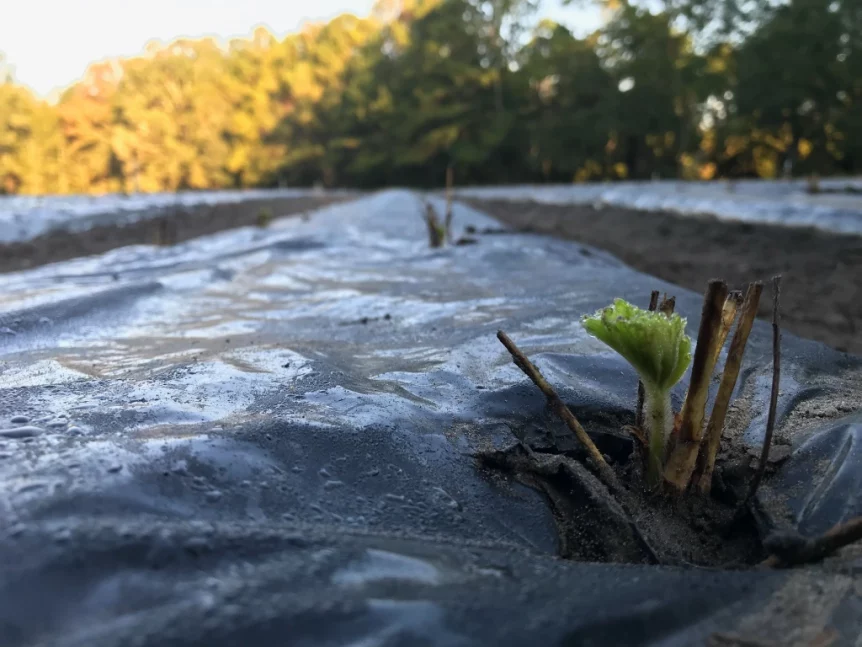
Weekly Field Update
Clemson Extension agents provide updates in The South Carolina Grower this week about the status of various crops being produced throughout the state.
Coastal Region
Zack Snipes
- It is dry as a chip in the Lowcountry and there is no rain in the 10-day forecast. Many growers are struggling to keep new transplants alive, mainly brassicas.
- Most of our strawberry crop is in the ground or will be in the ground later this week. Again, the main issue we are having is keeping the plants wet. Many growers have opted to go with two lines of drip tape which I think will pay off given the drought we are in. Many folks dipped their strawberry plants to try to protect themselves from Neopestalotiopsis and other crown diseases of strawberry.
- If you have extra strawberry plants or need more strawberry plants, please contact me and I can try to play matchmaker…think FarmersOnly for strawberry plants.
Midlands
Phillip Carnley
- We finally saw a little rain this past week in the Midlands which was very much needed.
- Cucurbits are on the way out to make room for more fall leafy greens. What cucurbits are left are currently infested with powdery mildew, cucurbit downy mildew and cucumber beetles. Research associate Justin Ballew is currently trialing a new chemical for control of cucumber beetles.
- Falls greens are looking great, as irrigated crops are looking much better than dryland plantings. Diamondback moth is still our biggest issue with grasshoppers and crickets nipping at their heels. Make sure to scout often, spray when needed and rotate those modes of action to combat resistance.
- Strawberries are still being planted in the Midlands. One thing I’m seeing more of this year is plants being planted too shallow. Make sure the crown is in good contact with the soil and not J-rooted. Cut offs and bare root plants seem to be larger this year than in years past, with great plant quality.
Rob Last
- Weather conditions are beautiful in the area, and it has a good fall feel. However, many fields are very dry, so monitoring irrigation will be crucial, particularly with no rainfall forecast in the immediate future.
- Tomatoes, pepper and eggplant are all being harvested in the Midlands with good quality.
- Leafy greens are looking good, but there is evidence of some black rot on the lower leaves following Helene.
- Keep scouting closely for diamondback moths; they are active in the area.
- Aphids are being observed in brassicas and lettuce.
- Strawberry planting is progressing well, with most plantings in the area looking to be completed early this week.
Pee Dee
Brittney King
- The Pee Dee could really use some rain, as many fields are very dry. Crops are looking good overall, and disease pressure remains low. Be sure to look out for aphids and spider mites as we continue to have warmer and dry weather.
- Leafy greens are being harvested in great quantity. Diamondback moth caterpillar is still causing feeding damage to leaves. Be sure that you are rotating your insecticides by using a different group number each time you spray. I’ve seen leafy green transplants coming in with caterpillars so please make sure to check out your transplants before putting them in the ground. Strawberries look great overall but are a little slow to take root. Plants have been in the ground for a little over a week now. This time is critical for making sure soil moisture is adequate so that your transplants do not dry out. Look out for signs of J-rooting and incorrect planting depth. I have already seen instances of this, so now is the time to correct it before it is too late.
Upstate
Andy Rollins
- Strawberry planting continued this past week. We’re still finding problems with root rot and other leaf diseases. Growers are dipping or drenching with Switch and phosphite. Keeping plants moist but not over-watered is an issue. Growers need to make sure their irrigation is getting to the plants. Orondis Gold performs better than Ridomil at managing root rot and needs to be injected after two weeks planted. We are also spraying Thiram with Howler and other protectant fungicides to keep foliar diseases in check. Getting some strawberry growth this fall is important. We have done some fall fertilization, but be careful not to create too large of a plant too early. Slow and steady growth is a better recommendation.










